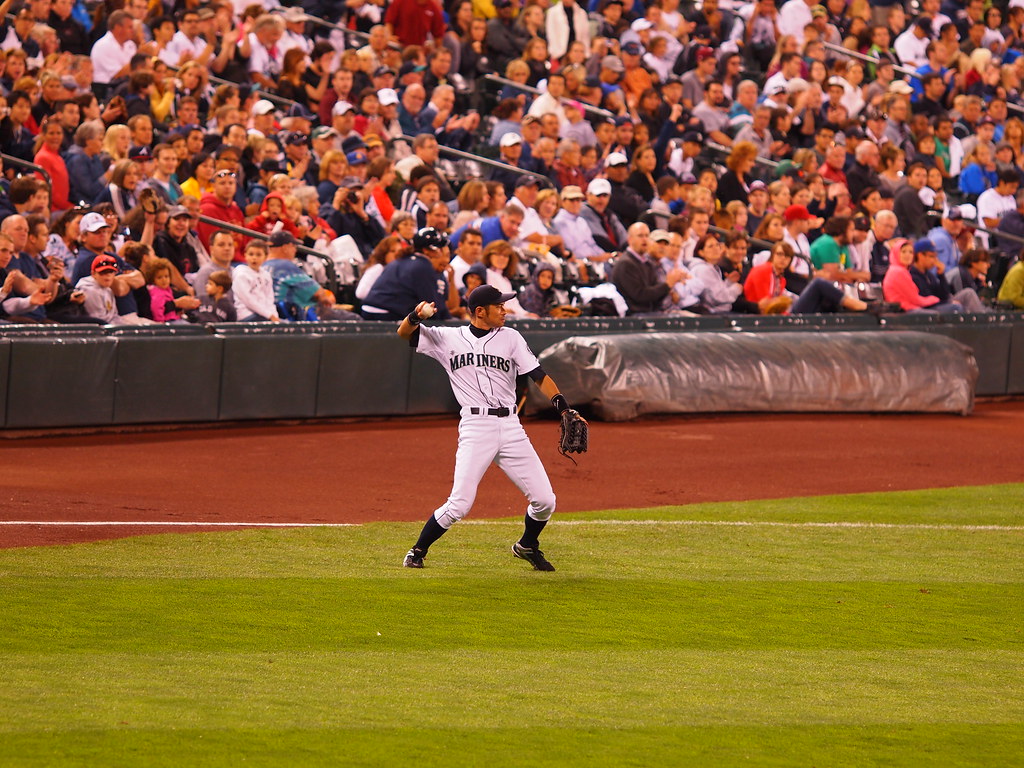On April 4, the Chief Cabinet Secretary of Japan, Yoshihide Suga, presented Ichiro Suzuki with Kokumin Eiyoshō, or the People’s Honour Award, exclusively offered to top performers in sports and entertainment only 27 times since its creation in 1977. For the third time since 2001, his first season with the Seattle Mariners, the famed baseball player respectfully declined the award.
This offer followed the events of March 21, when Ichiro officially retired from professional baseball. Fittingly, the announcement took place following his season opener with the Mariners against the Oakland Athletics at the Tokyo Dome, 350 kilometers from his hometown of Toyoyama.
Much of the news surrounding the retirement concentrates on reassuring fans, and the general baseball world, that Ichiro is destined for a place in the Hall of Fame. And he doubtlessly is. With 4,367 career hits from 1992 to 2018, Ichiro remains the all-time hits leader in professional baseball. Breaking George Sisler’s 1920 record, Ichiro amassed 262 hits in the 2004 season, a record that has remained untouched. In addition to hits, he led the league in batting average, plate appearances, and intentional walks. At the end of the season, his incredibly diverse talent was recognized with the Commissioner’s Historic Achievement Award. As is telling of the steroids era, he is only the ninth player to receive the acknowledgment without assistance from PEDs.
It would be an arduous task to do justice to all of Ichiro’s career achievements between the NPB (Nippon Professional Baseball) and the MLB. Between the two professional leagues, officially, he has 81 titles. As has been extensively reported in the press, Ichiro will be a first ballot Hall of Famer when he becomes eligible in 2025. However, there are 226 other plaques in Cooperstown. Ichiro deserves to be separated from even these greats.
To begin with, it would be inaccurate to discuss the craft that Ichiro perfected without mentioning his impact on the Asian-American community as a whole. As the first Japanese position player (non-pitcher) in the MLB, firstly, Ichiro should be credited with breaking a significant racial barrier that has allowed Japanese bats from Hideki Matsui to Shohei Ohtani to shine in the United States.
Ichiro should be credited with breaking a significant racial barrier that has allowed Japanese bats from Hideki Matsui to Shohei Ohtani to shine in the United States.
Born a righty, his father, a former semi-professional player, instructed Ichiro to swing from the left side in order to gain an extra step towards the ninety-step path to first base. Throughout his career, Ichiro maintained a mentality of diligently assuming control of each at-bat, carving out a niche in edging his way onto first base. With 2,514 of his 3,089 MLB hits coming from singles, he has the most in an individual season and has amassed the fifth most cumulatively.
While seldom included in discussions of the baseball “GOAT”, Ichiro deserves, at least, to be included in the debate. There has never been a player who approached the game with the focus that Ichiro displayed throughout his career, regardless of his results. Writer Bruce Jenkins argued that “he exists strictly within his own world, playing a game 100 percent unfamiliar to everyone else.”
Throughout his career, Ichiro maintained a mentality of diligently assuming control of each at-bat, carving out a niche in edging his way onto first base.
To examine this argument, let us first consider Ichiro’s training regimen —which started, of course, at the age of seven. From 3:30 to 11:00 every night, Ichiro and his father worked religiously, hitting 500 baseballs by machine and hand, as well as fielding and throwing 150 apiece. In high school, he built strength by hoisting car tires and mastered striking wiffle balls with a heavy shovel. After joining the NPB with the Orix Blue Wave at the ripe age of 18, his regimen was further intensified. Using the Beginning Movement Load Theory mastered by Yasushi Koyama, Ichiro focused on simultaneously building flexibility and strength. He used this machine throughout his entire professional career in both leagues, transporting the enormous equipment between Japan, Seattle, New York, and Miami.
He complemented these workouts with in-game calisthenics to maintain flexibility. Whether in the lonely Safeco right field or by the on-deck circle, focused yoga and breathing exercises were integral components to Ichiro’s game. In comparison, much of the rest of the Mariners outfield, Raul Ibanez in particular, often spent their “downtime” munching on chewing tobacco and gazing into the crowd.
In addition to painstakingly improving his physique, Ichiro displayed the utmost care for his equipment. While many sluggers childishly break bats after a disappointing at-bat, Ichiro kept his in a shockproof, moisture-free case. He maintained a daily cleaning ritual for his handcrafted Mizuno glove, acknowledging a “special meaning in reflecting back on your day’s work while paying homage to a piece of equipment that helped you.”
Ichiro’s sincere devotion to his baseball practice was an element of an overarching attitude of humility nurtured by his father, who requested that coaches avoid offering praise in order to “make him spiritually strong.” Despite his small size (5’ 10” and 170 lbs), Ichiro had surprising power and often effortlessly smashed home runs during batting practice,
Ichiro’s sincere devotion to his baseball practice was an element of an overarching attitude of humility nurtured by his father.
In spite of his long-ball capabilities, he only averaged six a season. However, if he were to focus on hitting home runs and performing gloating bat flips, he would have had to alter his unorthodox batting style, thus necessarily collecting fewer hits. He instead made the conscious choice to avoid providing sexy TV moments, viewing the game as a sober discipline that one conquered only with a meticulous approach. This attitude is one of constant improvement and, concurrently, dissatisfaction with any level of success. In his words, “Even the best hitters fail seven of ten times… In those personal failures, I felt I could have done better.” Perhaps this is why Ichiro was so successful—in his search for perfection, he focused on eliminating every flaw, none appearing too minor.
Even putting his once-in-a-lifetime skills aside, Ichiro’s career has proven that nothing short of utmost respect for the discipline should be expected. In an age when baseball is increasingly seen as a lethargic sport for the brawny and dull to smash homeruns and break bats, Ichiro exemplified a refreshing difference. In the simple words of MLB columnist Will Leitch, “Every day that Ichiro played in a baseball game was a good day.”








